Not long after Johannes L. Burckhardt discovered Petra in 1812, historians began to speculate about what had happened to the civilization that built such a magnificent city. Over the years archeologists and historians have collected much information about the Nabataeans, but to date no one has established any definite facts regarding who and where the Nabataeans are today.
In the following short paper, I would like to present my own theory as to what happened to the Nabataean people, and who the Nabataeans might be.
The End of the Kingdom
The last Nabataean king was Rabbel II. He disappeared from the scene in AD 106 when the Roman legate of Syria, Corelius Palma annexed the Nabataean kingdom on behalf of the Emperor Trajan. The old Nabataean Kingdom became the new Province of Arabia within the old Roman Empire. Coins were then minted in Trajan’s reign referring to Arabia adquista or the acquired, not captured Arabia.
I believe that it is vitally important to try and understand what took place in 106 AD if we are to understand the fate of the Nabataean people. For several years, one of the popular theories was that the Romans conquered the Nabataeans, and that eventually the Nabataeans became just another ethnic group of people on the fringes of the Roman Empire. A few of their military units were absorbed into the Roman army, but otherwise they simply pass from the interest of the historians of the time. As trade moved to other areas of the empire, the Nabataeans became steadily poorer until their city crumbled and was lost to history. Recent archeological studies, however, have shown that this was probably not the case. Petra survived as a major center for many centuries after it’s absorption into the Roman Empire.
The scenario I would like to present is that the Nabataeans negotiated for a unique place within the Roman Empire. This would be in character with their role as merchants, and their history of seeking honor and prestige. (See: Honor and Shame in a Middle Eastern Setting.)
The Setting Rabbel II came to power in 70 AD and ruled until 106 AD when he disappears from the scene. At the time of his coming to power, he was only a child, and his mother, Shaqilath acted as a regent for six years until he was old enough to rule. While we know this much, we do not know how old Rabbel was when he became king, nor how old he was when his mother stepped down as regent. It was not uncommon in those days for a twelve or thirteen year old boy to be considered a man, and to even get married. This practice, although relatively rare, continued among various Arab tribes right up until the present, only falling out of favor in the last fifty years or so, although I know of cases where it exists in Yemen to this date. So it might have been possible that Rabbel II was, say, 6 when he became king with his mother as regent and 12 when he came to power as the Nabataean king. If this were the case, he would have been only 47 when he handed his empire over to the Romans.
As far as I know, there is no known reference to Rabbel II as having died in 106 AD. He seems to have simply handed his empire over to the Romans and disappeared from the scene.
The Kingdom
Rabbel the II lived during an interesting time in history. He was the last of a number of Nabataean kings who ruled for extensive periods of time. Rabbel II ruled for 36 years, and his predecessor ruled for 48 years. Out of the ten kings before that, there were only two kings whose reigns lasted less than ten years. To most historians this indicates a very stable form of leadership, and is even more amazing when you consider that the Nabataean kings ruled by popular approval and not authoritarian rule.
During the time of Rabbel’s rule, several things were taking place in the Roman Empire. The Jewish Revolt and subsequent retaliation by the Romans had brought a large Roman military force into the Middle East during the beginning of Rabbel’s reign. This army had fought and conquered the city of Jerusalem, and the Romans had enslaved many people in the aftermath of the fighting. As the iron fist of the Roman army crushed more and more of Rabbel’s neighbors, Rabbel was faced with the predicament of choosing between resisting the Romans or suing for peace and gaining something in return. It appears that Rabbel II, who was known as ‘he who brings life and deliverance to his people’ chose to sue for peace. There are no records from the Romans that they every fought against the Nabataeans in 106 AD. Roman historians were quick to record the heroic battles of their armies, so it would seem that there was no military action. There are also no records of any terms for peace either.
However, one would assume that the Nabataeans, with their worldwide fame for buying, selling, and bartering, would have striven to obtain the best deal possible for giving up their civilization. This undoubtedly would have included obtaining an honorable place within the Roman Empire.
The Agreement
Since the records of the treaty have not survived to this date, we can only surmise what it would have included from the events that followed. These events provide clear clues as to the agreement that Rabbel II would have hammered out with the Romans.
- Nabataean merchants seem to have become powerful merchants within the Roman Empire. Nabataean inscription have been found on the Isle of Rhodes, and near Naples Italy, where a Nabataean temple is located, as well as in Alexandria in Egypt. (See Nabataean Travels) At present I am investigating the backgrounds of several wealthy Roman merchant families that came into existence during this period, but as of this publication, am not prepared to publish any of my findings. I do, however, believe that many of the wealthy Nabataean merchant families obtained Roman citizenship and relocated around the Mediterranean Sea. These families had already adopted Hellenization by 60 BC, and so in 106 AD they simply became Roman merchants, bearing Greek names. (It seems that Greek names became quite popular among the Nabataeans after they acquired Damascus in 85 BC, and king Aretas III took on the Greek name of ‘Philhellene.’ There are many records of census’ taken throughout the Roman Empire, and I believe that in many cases the Nabataeans simply appeared as Greeks or Romans in these records. As the Nabataeans appeared civilized and hellenized, they seem to have negotiated for Roman citizenship and permission to act as merchants throughout the Roman Empire.
- After the annexation of the Nabataeans into the Roman Empire, the Romans undertook to build a Roman road through the old Nabataean Empire to the port city of Aila (modern Aqaba). What is most interesting about this road is not its existence but its termination point. It appears that the Romans did not build a road down to the Nabataean city of Leuce Come. (See: Leuce Come and Nabataean Trade Routes). It appears that the Romans agreed with the Nabataeans not to interfere in their lucrative trade with the east. The Romans, however, took over the Nabataean customs points and presumably continued to charge the customary 25% customs charge. (Periplus; See: Nabataean Ports) It appears that the Nabataeans may have negotiated for control of the merchant business south of Aqaba, and thus continued to control the frankincense trade.
- From the Periplus of the Erythraean Sea it becomes obvious that the Arabs continued to trade with India and China, and that Roman merchants did not frequent this trade route. It remained for all intents and purposes under Arab control for several hundred years. Lionel Casson, in his introduction to The Periplus Maris Erythraei states: “Somehow they (the Arabs) were able to keep this knowledge from Greek seamen so that, when these do start taking part in the trade with Arabia and India, they sailed, as the Periplus specifically informs us (26:8.28-29), no further east than Eudaimon Arabia, where Aden now stands, less than one hundred nautical miles from the mouth of the Red Sea. Here they unloaded whatever cargoes they were carrying and took on what Indian vessels had brought from their home ports (26:8.27-31).” He goes on to state: “… some of it may on occasion have traveled in ships from Roman Egypt but the bulk was handled by Arabs and Indians.” One would have imagined that if the Romans had fully conquered the Nabataeans, that Roman merchants would have been eager to partake in the very lucrative maritime trade with the east. However, according to the Periplus (26), only Arab boats (see: What was Ancient Arabia?) ventured passed the bottom of the Red Sea. Thus. it would seem that the Nabataeans negotiated for a continued monopoly on eastern maritime trade.
- It is also interesting to note that the Nabataean Empire was kept together as one province, rather than splitting it into two or more provinces. The capital of the new province continued on at Bostra, and Nabataeans continued to live in peace. The Nabataean area experienced continued economic exchange with other parts of Europe. It was only in the 4th century AD that emperor Diocletian agreed that this arrangement was rather difficult to manage, and divided the province in such a way that would make more sense administratively. This provides us with a hint that it was important to the Nabataeans to keep their kingdom together and intact, and thus, this was probably a point in their agreement with the Romans.
- During the reign of Rabbel II, the Nabataeans began to focus their attention on agriculture. Large ranches and horse breeding programs were developed. It appears that this continued on after the annexation. Ranching and raising olives and grapes appears to have become the focus of the poorer Nabataeans who stayed within the old Nabataean Empire after it was annexed to the Romans.
Splitting of the Empire
After carefully studying this issue, it appears to me, that the Nabataean people eventually became divided into two groups. One group were the powerful and rich merchant families who probably took on Greek names and culture and moved to large cities around the Roman Empire, such as Alexandria, Rhodes, Naples, and Rome itself. Because they changed their names, these families eventually became lost within the Roman Empire. There are a number of interesting facts however, that point to their existence In some of these locations we find Nabataean temples, inscriptions, pottery, and statues. (See: Nabataean Travel) In some of the Roman censuses taken after 106 AD, it appears that individuals are listed as having traveled to India for trade. All of these individuals have Greek names, and have been assumed to be Greeks by many historians, rather than Nabataean Arabs who had adopted Greek names and culture. (Lionel Casson, The Periplus Maris Erythraei, Page 32; see also Who were the Ancient Arab Traders)
Those Nabataeans that were not rich and powerful would have remained in the old Nabataean Empire, along with people from other backgrounds. Several ancient historians point out that in their day Petra was filled with citizens from other countries. Along with this, the Nabataean Empire may have contained many run-away slaves, as the Nabataeans did not practice slavery. When the Nabataean Empire was handed over to the Romans, these people probably did not receive Roman citizenship. In time their social position within the empire would have suffered.
So it is not surprising to discover that around 900 AD the Muslim writer, Abu Baker Ahmad ibn Ali ibn Qais ibn Wahsiyah an-Nabati, referred to the Nabataeans, (his own people) as being held in disrespect. Ibn Wahsiyah was a physician and botanist with interests in agriculture, animal husbandry, as well as alchemy, magic and toxicology. He was not the only scholar of his day to mention the Nabataeans, but he was perhaps the greatest spokesperson on their behalf. He attributed nine-tenths of all scientific knowledge to them. His books are known as Al-Filaheh an-Nabatiyah (AD 904) and As-Sumum wat-Tiyaqat (AD 900)
Ibn Wahsiyah claimed that his ancestors, the Nabataeans, were held in low regard by the Arabs of his day, and they were not receiving the honor and respect that he felt they were due. After Ibn Wahsiyah’s comments, the Nabataeans disappear from recorded history.
What this scenario seems to tell us, is that the wealthy Nabataean merchants moved away and continued to pursue wealth as Roman citizens in the great cities of the Empire, while the remaining Nabataeans in the new Roman province of Arabia continued on in a much lower social standing. Eventually the wealthy families disappeared into the Roman melting pot, and the remaining poorer Nabataeans became farmers and common laborers. By 900 AD many of them had left Nabataea and had settled in places like Iraq (where Ibn Wahsiyah wrote from).
Who Are the Nabataeans Today?
Once Petra was rediscovered, and western archeologists started asked around as to who were these industrious, illustrious people, a number of Arab tribes immediately offered themselves as possible candidates. After all, if you lived in the area, perhaps you were the descendants of ancient kings. However, establishing concrete evidence has proven almost impossible.
The Bedul
One of the move vocal tribes is that of the Bedul; the tribe living in the ancient caves in the city of Petra. While some of the Bedul claim to be descendants of the Nabataeans, there is conflicting opinions on the history of this tribe. Some members of this very small tribe fiercely defend the theory that they are descendants of the original Nabataeans, and this opinion is often passed on to tourists. Other members of the tribe have confided in me that the Bedul only moved into the area a couple of hundred years ago, from the deserts of Northern Arabia.
The Hawitat
Another contender is the Hawitat tribe, which lives east and south of Petra. While it makes for good discussion while visiting Howitat tents, I believe there is no evidence that might link the Howitat with the Nabataeans. Most of the Howitat poetry points to their origins as being in central Saudi Arabia.
The Yezidis
Another contender is the Yezidis of Iraq. An excellent article is found in the Encyclopedia of Islam, Volume VII, under the heading, Nabat. This article explains that Arab literature mentions that there were at least two distinct groups of Nabataeans in the Middle East during the end of the first millennium. First there was a group of Nabataeans from Iraq that were known as Nabat al-‘Irak (Iraqi Nabataeans). These may have been descendants of the original Nabatu tribe before most of them migrated into the deserts of Arabia, or most likely they were the Nabataean refugees from the Roman province of Arabia that Ibn Wahsiyah mentions in his books.
The second group of Nabataeans were the Nabat al-Sham or Nabataeans of Damascus. In Arab literature, they are known as being from Damascus, as Damascus has always been a principle Arab city. In addition, the Nabataeans controlled Damascus from 85 BC to the time of the Apostle Paul, (interrupted by the Armenian King Tigranes, son of Mithradites VI of Pontus) who ruled the city from 72 BC to 69 BC. Tigranes vacated Damascus in 69 BC to deal with a Roman threat against his own capital.)
Based on this information, it is possible that two remnants of Nabataeans existed until the Islamic age in the Middle East, one being in Iraq and Turkey (possibly the Yezedis who maintained a separate identity and religion.) The second one being a group in Damascus that eventually was swallowed up in subsequent Islamatization and Arabization.
The Slayb
Another contender for being descendants of the Nabataeans is the Slayb tribe of Arabia. Jabrrail S. Jabbur, the author of ‘The Bedouins and the Desert’ states “At one time it seemed to me that they might be descended from the Nabataeans, for no other than the fact that they are the most renowned poets of the desert and their poetry is known as ‘al-shi’r al-nabati.” He goes on to state, “Although (like the Slayb) the Nabataeans were the connecting link in the commerce between East and West, and knew the trade routes in the peninsula, there is in their history and military spirit enough to rule out the possibility that they would have declined to such a position as that occupied by the tribe of Slayb.” … “Thus they live in the desert, as people scorned and regarded with contempt.” Obviously Mr. Jabbur did not know of the complaint of Ibn Wahsiyah around 900 AD where he expresses how low the Nabataeans had sunk on the social level.
Although there is no definite proof, I would like to put forth the case of the Slayb tribe as still being a good possible candidate for being a remnant of the Nabataeans who remained in Arabia.
The Slayb tribe are known as trackers and guides in the Middle East. They are most intimately familiar with the deserts, oases, wadis, pools, mountains, dunes, animals, and plants of Arabia. They are the tribe most proficient at crossing the desert wastes and the most widely distributed around Arabia. They are known as the Slayb or the al-Slaaba, as the Bedouins call them. Some others call them the tribe of al-Sulbaan or al-Khlawiya. They are not a large tribe, and are the weakest in strength, lowest in status, the most inferior in terms of ancestry, and indeed, it seems that many consider them as having no line of descent as recognized by the other Arab tribes. On the other hand, they know the desert so well, that they have served as guides for other Bedouin tribes for many centuries.
The Slayb tribe does not claim any area of the desert as theirs, nor has it established itself in a particular region of Arabia. Instead, they have branches scattered in most parts of the peninsula, with some of them being as far north as the Syrian Desert to Tadmur and Mosul, to the Nafuud desert in the heart of Arabia. Doughty mentions that they roam from the Syrian highlands to Yemen beyond al-Ta’if. (Doughty I, 325) (Guarmani, p 92)
Slayb Origins Scholars have been at a loss to account for the origins and the descent of the Slayb. There has been a great deal of debate over the years as to the meaning of their name. Some say that the word Slayb originates from the Arabic word Saliib, meaning ‘cross’ and thus they imagine that the Slayb have roots dating from the time of the Crusaders. Others claim that the word Slayb originates from ‘As-Solb-Al-Arab’ which means ‘from the back of the Arabs.’ This phrase refers to a reference that they are pure descendants of the aboriginal Arabs.
The Arab scholar Sulaymaan al Bustani, (Al Maqtataf, 1887) divided the Bedouins into three classes, the nomads, the semi nomads, and the nomads of the nomads. He placed the Slayb in the latter category. He was the first scholar to propose the theory that the Slayb were the descendants of the Crusaders. Perhaps directly from Crusaders themselves who were abandoned in the Middle East when the Europeans pulled out, or perhaps originating from intermarrying between the Crusaders and the local Christian Arab population. In 1900, Al-Bustani again covered this topic in an extended essay in volume XI of the Daa’irat al-ma’aarif, (Al Sulaba, XI, 2-9).
In the first edition of the Encyclopedia of Islam, Professor W. Pieper examines the Slayb, but is unable to arrive at a precise informed conclusion concerning their origins. He concludes that they are Bedouin who originally adhered to some religion other than Islam, and that they embraced Islam at a later time. He ends with a statement that their manners and customs and their inferior socio-political standing indicate that they were the victims of some terrible ancient catastrophe or war, and that it was this that brought them to their current situation of ignominy and wretchedness. (W. Pieper, ‘Sulaib’ in Encyclopedia of Islam, first edition, edited by T. W. Arnold, (Leiden, 1918-34, IV, 511 - 515)
Later the French authorities in Syria wrote a book about the tribes of Syria. (Les Tribus nomades de l’etat de Syrie, Damascus, 1943, pp. 247 - 248) where they state: “Some attribute their origins to India and claim that they were brought to Baghdad as musicians for one of the Abbasid caliphs. They base their view on the facts that the Slayb dialect contains some Indian terms, that some of the folk tales and stores are similar to the narratives of the Thousand and One Nights, and that many of their clans camp in the land adjoining the Gulf.”
During the last days of British rule in the Middle East, Glubb published a book called a ‘Handbook’ in which he mentions the Sleib tribe on pages 65-66. He states: “The Sleib are a strange tribe whose origin is lost in legend. According to some, they were brought from India to Baghdad by the Abbasid Caliphs as musicians. They themselves say they are descendants of the Crusaders and this is the generally accepted version. Bands of Crusaders remaining in Syria took up hunting as a means of existence and were driven in to the desert by newcomers. Certain it is that the Sleib are great gazelle hunters. They claim that the name ‘Sleib’ is a corruption of the Arab word for ‘salib’ (cross) and for centuries they have worn jackets made of gazelle skin, the dark marks of which formed a cross. They are certainly not Semitic and the prevalence of fair-haired and blue-eyed types amongst them appear to support their claim to Aryan descent. They are renowned as guides, being able to keep their route in the dark, or in a dust storm. They say they were forced to become Muslim, but their own code forbids polygamy and the wife has the right to repudiate her husband. They never contract marriages outside the tribe.”
It is interesting to note that the connection between the Sleib tribe and the Crusaders is a rather recent affair. The Italian explorer Lodovico di Varthema, passed thorough the Middle East in1503 dressed as a Mamluuk pilgrim. He records information about many of the tribes, but never mentions any connection between the Sleib and the crusaders. Likewise, Carsten Niebuhr, set out with five other explorers in 1761, traveled in Arabia, Yemen and India, but he never mentioned any connection between the Slayb and the crusaders. The memoirs of William Beavwes, Gaylard Roberts, Barthlomew Plaisted and John Carmichael (The Desert Route to India) do not mention any Crusader connection. Even John Lewis Burckhardt, who discovered Petra, makes no connection between the “El Szolyb” tribe and the Crusaders. The Finnish-Swedish explorer, Georg August Wallin passed through Arabia in 1845, and recorded observances of the Slayb tribe in three places in his book, but never once makes a Crusader connection. Sir Richard Burton in 1853 (Personal Narrative of a Pilgrimage to Al-Madinah and Meccah, London, 1893) II, 121) also makes no connection between the Slayb and the Crusaders,
On the other hand, the English Explorer William Gifford Palgrave (Palgrave I, pg 150, 1866) mentions a tribe of Slayb as a group most renowned for the practice of medicine among the Bedouins, though they are ‘strangers to the Arab stem.’ He states “They claim they are from a ‘northern tribe’ and that they have fair complexion, handsome features, and light eyes, pointing to a Syrian and not Arab origin. Similarly, their careless gaiety of manner strongly contrasts with the cloudy and suspicious disposition that one find among the other sons of the desert. Indeed their name and customs confirm their descent from a Christian origin.” However, Palgrave does not explicitly state or suggest that they are of Crusader or Frankish origin.
In 1864 Napoleon III send the Italian explorer of Arabia, named Carlo Guarmani, to purchase Arabian horses for him. He mentions that he saw Slayb, but took them for ghajar, or gypsies, and was mostly interested in their donkeys. On one occasion he fainted and was found by the Slayb. He says that four ugly looking women, their men folk looking the same, nurtured him back to health. He found nothing beautiful or striking about them, other than their horses. He points out “The principle characteristics of the Suluba do strike anyone knowing gypsy types in other countries. To mention a few: they are parasitic, feigning poverty, they are mostly well off; despised by resident folk, but are free to go where they will; of unknown lineage, and of no citizenship, skilled in hunting (or poaching); expert tinkers; having curious habits, and bury their money.”
In 1865, Colonel Lewis Pelly, the British Resident in Bushir took a journey in the desert with a Slaybi guide. He learned much about the Slayb, and records the following: “On certain festivals and particularly on occasions of marriage and circumcision, they fix a wooden cross, dressed in red cloth and adorned at the top with feathers, at the door of the person married or circumcised. At this signal the people collect and dance around the cross. They have a particular dance. The young men stand opposite their female partners, each advances, and the youth slightly kisses the shoulder of the maiden.”
He goes on to state: “The word Seleeb means a cross. But some of the cast derives their name from As-Solb-Al-Arab (i.e. from the back of the Arabs) meaning to assert that they are pure descendants of the aboriginal Arabs. The Mohammedans, on the other hand, stigmatize them as outcasts”
He later wrote: “They… state that their own proper place of pilgrimage is Haran, in Iraq or Mesopotamia. They also say that their principal people have some psalms and other books written in Chaldaean or Assyrian. They respect the Polar star, which they call Jah, as the one immovable point, which directs all travelers by sea and land. (See Nabataean Sailing) They reverence also a star in the constellation called Jeddy, corresponding with Aries. In adoring either of these heavenly bodies, the Selaib stands with his face toward it, and stretches out his arms, so as to represent a cross, with his own body…. They assert themselves to be a tribe of the Sabians emigrated to Nejd.” (Cf. Pelly, Note on the Selaib Tribe, Appendix XIII, Report on a Journey to the Wahabee Capital of Riyadh in Central Arabia, Bombay, 1866, republished Cambridge, 1983, Page 90-96)
As I mentioned earlier, Sulaymaan al Bustani, (Al Maqtataf, 1887) clearly identified the Salayb as descendants of the crusaders. The proofs he cites were: occasional blue eyes, fullness of face, abundance of hair, their lack of affiliation with any particular religious confession, the claim made by some of them that their ancestors were Franks, the difference between their lifestyle and that of other Bedouins, and some of the Arabic terms they used that were different from the Bedouin of his area, as well as their name, which he took to mean “The people of the cross.” After Al Bustani published his book, his view of the Salyb became very popular, especially among missionaries and church statesmen in Europe looking for some glimmer of Christian light among the Bedouin in Arabia.
A few years after Al Bustani published his book, Father Anatase al-Karmali published the first volume of his journal, Al-Mashriq (1898) where he tells of an account where he asked some Slayb elders of their origins. He records that the elderly man cleared his throat, wiped his face, pondered, and then recited a long rhymed prose. Part of it went like this: “We are from the best of people, their choice elite; from the most eminent Bedouins, their cream most sweet. Our forefather was an Arab of Slayb, Dab’aan by name, this is a land of unsullied fame, a country to which that of the Arabs is close at hand, in which strange spices do grow in the land. Then when the people became more and more, and the difference among stocks did was full sore, our forefather Dab’aan to himself vowed, to go forth from a land where dwelled such a crowd.” Father Anastasse claims to have heard the same poem on a number of occasions from different Slayb elders. One wonders, of course, why a poem translated from Arabic rhymes in English? It is interesting to note that Father Anatase al-Karmali also recorded “As for the Slayb themselves, they know nothing of their origins, or if they do, they have thought it up in their imaginations or invented it in their own minds.” Page 674.
It is also interesting to notice that great orientalists like Musil, Philby and others say that they could not determine their origin. Later William Seabrook wrote about his travels in Arabia in a book titled Adventures in Arabia, mentioning the Slayb but his book is so full of errors that it must not be taken seriously.
Another western scholar as the anthropologist Henry Field, who undertook comprehensive studies of the tribes of Arabia included measuring their skull sizes. He saw more than 100 Slayb tribesmen near Kuwait, and noted that their eyes were generally black, as was their hair, and that they had long narrow heads. While they remained isolated from the other Bedouin he makes no connection between them and Frankish or Crusader origin.
It is interesting to notice that in questioning the Bedouin of the desert about the Slayb, that they retort that the Slayb are scoundrels, and that they say whatever you want to hear. If they know the truth of their origins they would never tell it to someone else.
Role of Slayb Women: Traditionally Bedouin women have a very restricted and conservative life. Slayb women on the other hand enjoy a greater measure of freedom. They are not compelled to marry someone they do not like, but their consent must also be granted. Only very rarely is there a second wife, and only more recently has this been practiced as the Slayb try to integrate into modern life. Generally the Slayb are well off compared to other Bedouins but they often hide their wealth rather than display it as is common among other Bedouin tribes. If a woman is not content with her husband, she can lave him and be awarded a share of the bride price.
Slayb women are also familiar with medicine, the dressing of wounds, and the use of certain plants as medicaments. They often serve as a nurse to attend the wounded. In past years Slayb women tended to wounded when fighting arose between tribes, or people who have suffered from exposure in the desert.
Slayb women also have an artistic role as dancers at weddings and circumcision celebrations. They are sometimes invited to dance at other Bedouin tribe’s celebrations. Because the women dance with their hair hanging down and head uncovered some have conjectured that they are gypsies.
In some circles, the Bedouins believe that Slaybi women have occultic powers, able to separate two people who love each other, or join together two who are quarreling, to strengthen people, or shorten or prolong life.
Some Slayb women are accepted as poets, and compose Bedouin verse in the form of panegyrics, elegies, and love poetry. In his book, ‘Abbaas al-‘Azzaawi cites examples of Bedouin qasiids by Slayb women. (‘Ashaa’ir al’Iraaq, I, 322-325) In the past, Slayb women often decorated their faces with tattooing marks. Slayb women also traditionally ride donkeys, with both legs to one side.
The Bedouin consider Slayb women with contempt and scorn, and will not allow their sons to marry them, despite how beautiful a woman may be. Likewise, a Bedouin woman would refuse to marry and Slayb man, regardless of his wealth. Even among the Slayb, those of the south are usually better off, and seldom mix or marry with the poorer Slayb of the north.
Conclusion
Are the Slayb the ruminant of the ancient Nabataeans who remained in Arabia? While we may never know for certain, we can speculate on the possibilities. What characteristics would the remnants of the Nabataeans, now degraded to the lowest social standing, have in today’s world?
One would expect that the remnants of the Nabataeans would:
- Be known as outcasts, and low on the social scale, as stated by Ibn Wahsiyah
- Hold themselves in high regard, since they descended from a once great history
- Be secretive about this history, as they were during the Roman times
- Have an excellent knowledge of medicine and herbs, as stated by Ibn Wahsiyah
- Have an excellent knowledge of the ancient desert trade routes
- Have an excellent knowledge of astronomy and navigation by stars
- Have knowledge of desert plants and animals
- Shy away from fighting in battle similar to the ancient Nabataeans
- Have ability with metal and handicrafts
- Have ability in music and poetry, similar to ancient Nabataean entertainers
- Provide their women with some status in society
- Have some Indian terms in their Arab language
- Have pre-Islamic components to their religion
- Have some foreign blood mixed with theirs, from intermarrying with Romans
I would like to suggest that these same characteristics perfectly describe the Slayb tribe. Is this conclusive evidence? Absolutely not, but it does make one wonder.



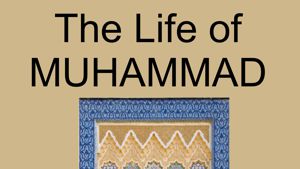




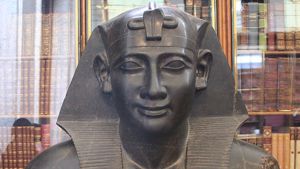
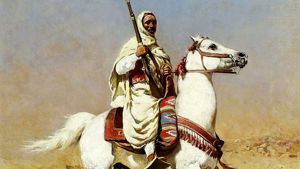


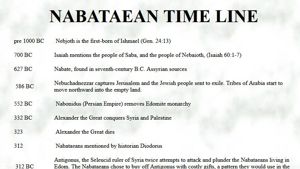



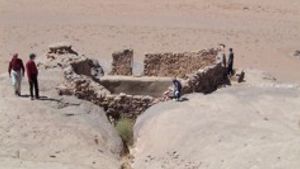
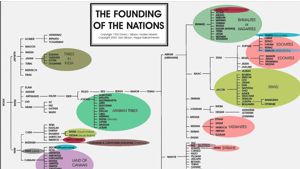
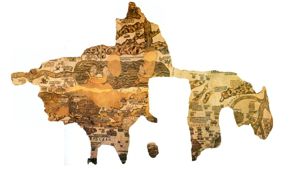
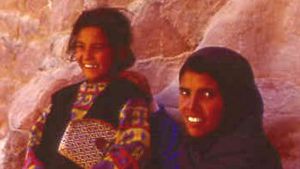
Page Discussion
Membership is required to comment. Membership is free of charge and available to everyone over the age of 16. Just click SignUp, or make a comment below. You will need a user name and a password. The system will automatically send a code to your email address. It should arrive in a few minutes. Enter the code, and you are finished.
Members who post adverts or use inappropriate language or make disrespectful comments will have their membership removed and be barred from the site. By becoming a member you agree to our Terms of Use and our Privacy, Cookies & Ad Policies. Remember that we will never, under any circumstances, sell or give your email address or private information to anyone unless required by law. Please keep your comments on topic. Thanks!